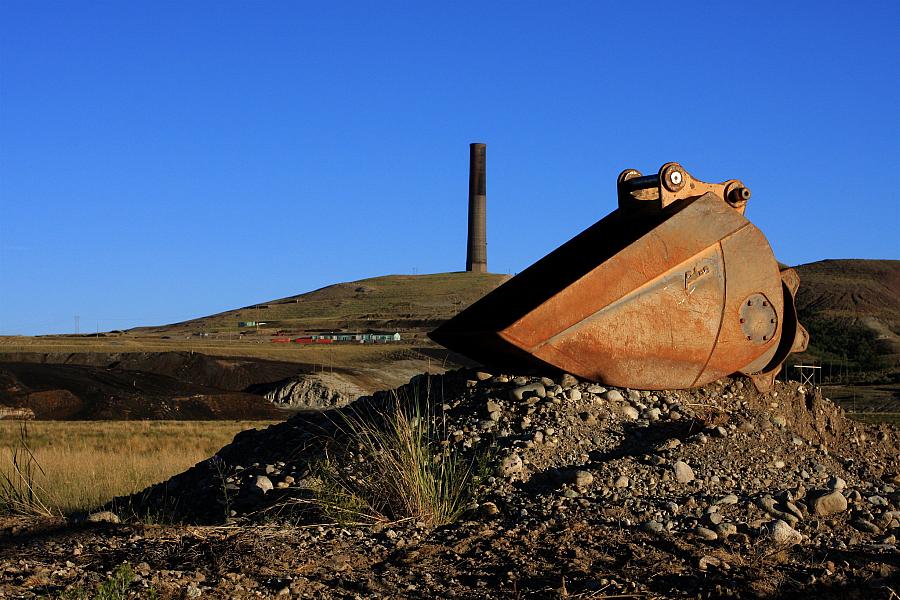What festering environmental threats warrant investigation near you?

(Photo by TravelingOtter via Flickr/Creative Commons)
When I was a reporter in the town of Anaconda, Montana, one of the key parts of the historic copper mining industry in the state, visitors were greeted with ominous black mountains on the edge of town. These were heaps of waste byproduct, known as slag, from the process of smelting copper. Given that Anaconda is part of the one of the largest environmental disaster zones in history, these black heaps held more unanswered questions than answers:
Was the waste seeping into the water supply? Was dust from the slag heaps dangerous to breath? What would long-term exposure to slag do to human health?
Shortly into my time as a Montana Standard reporter, civic leaders and investors came up with a solution. Take the slag and rebrand it as black sand for traps in a new golf course being built on top of remnants of the old ARCO smelter. Kathy Cobb, writing for the Minneapolis Federal Reserve Bank website in 1997, wrote:
Smelting wastes are buried beneath 2 inches of crushed limestone, 18 inches of clay and 6 inches of topsoil. The course is landscaped with a natural growth of grasses and shrubs, sprinklers ensure green fairways and greens, and a complex irrigation and drainage system eliminates leaching of affected soils.
Now, the good people of Anaconda may be happy with their black-and-green golf course, but this is a classic case of kicking the environmental waste can down the curb.
Slag is not benign. It contains arsenic, beryllium, and lead, among other things. The list of negative health effects associated with those substances alone includes respiratory disorders, cardiovascular disease, birth defects, cognitive impairment, and a variety of cancers.
Locals and tourists continue to play golf on top of the slag to this day. Whether it's old phones, defunct computers, or heaps of industrial waste in cities and towns all over the country, we have more waste than we know what to do with. And we have too few stories exploring the problem.
One of my favorites from the recent past was a 2019 piece by Marjie Lundstrom and Eli Wolfe in Fair Warning, the publication run by my old friend and colleague from the Los Angeles Times, Myron Levin. “Fields of Waste" exposed how the problem of all the piles of old tires around the country was addressed with one of these kick-the-can solutions in the 1990s, when companies started to turn them into artificial turf. Now that turf is hitting its expiration date, and the question of how to dispose of it has returned.
Lundstrom and Wolfe wrote:
Even among environmentalists, disposal of artificial turf has gotten scant attention, but for a vocal group of parents and activists, including many with roots in the Washington, D.C., area. They are alarmed by some studies calling out the potential health risks of crumb rubber and the exposure of young people to cancer-causing chemicals, lead and other dangerous toxins.
Here are three things you can do to put together a similar investigation of environmental threats near you:
-
Visit the dump. No better time to do this than during COVID-19. Mask up and have someone there give you a little tour of what they’re seeing more of in recent years. Do this virtually, too. Talk to the agencies in your area and the private companies that handle waste. If you happen to have a Superfund site in your area, talk with the environmental authorities. Your question can be the same everywhere you go. Just point your finger and say, “What happens to that?” You’ll likely find out that many of these materials are going to be around for a very long time.
-
Find out about the rules — or the lack thereof. Amazingly, there are very few rules for disposing of rubber waste, like used tires that have been turned into artificial turf. This will be true for many other types of waste, too. If there are rules, find out what they are, and whether they are state, federal, or local. Find out how the rules are enforced or ignored.
-
See what was promised and what promises were kept. This goes back to the Anaconda story. (And I hope my old friends at the Standard are reading this.) When governments and companies promise a “win-win” for the community, they should be held accountable. Waste is going to be turned into energy. Waste is going to be turned into products. Waste is going to be turned into jobs. We have seen and heard it all. Some of it turns out to be true. Some of it turns out to be more astroturfing. It’s your job to check the claims against what actually happens on the ground.
Did these environmental waste problems and their attendant health risks get resolved? Or did they just kick the can down the curb?

